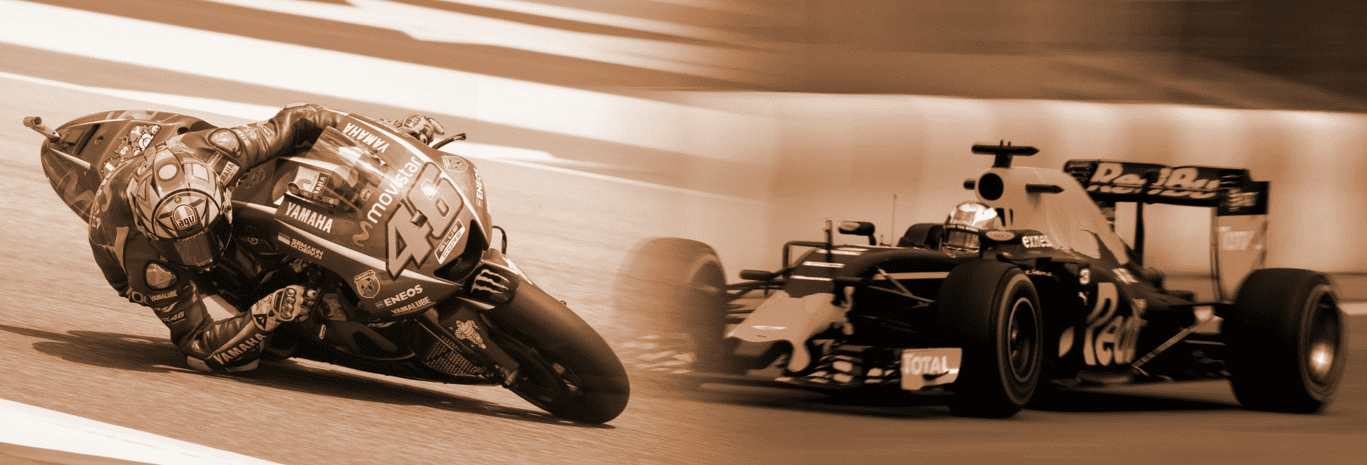Comparisons are odious, so let’s go ahead and make some, taking no notice of the smell.
Formula 1 car racing these days is cripplingly dull, overpriced, impersonal and irrelevant, an over-rated spectacle of lots of money following even more money round and round, with nothing much happening. It deserves to dwindle away into obscurity.
MotoGP could hardly be a sharper contrast. It’s thrilling, full of variety and excitement, and overflowing with humanity. A genuine sport that not only deserves Olympic status, but also to supplant F1 as an international TV sport of the highest stature.
Okay, I exaggerate. But only a little.
Following a 2016 season with a record number of different winners and three excellent opening flyaway races this year ahead of the European season, MotoGP deserves all the compliments. And F1’s typical and most recent GP, in (of all places) Russia, deserves the criticism.
As London Times reporter Rebecca Clancy put it: “The race will not go down in history as one of the most exciting … the lack of racing or overtaking … will leave Liberty, the sport’s new owners, with something to ponder as they try to attract more fans.”
So what? I mean, we all know this already, or you wouldn’t be reading this magazine and I wouldn’t be writing this column. Why worry about F1 anyway?
My personal reasons are because I grew up liking both car and bike racing, taking part in both of them. I specialised in bikes largely for professional reasons. This was a long time ago, mind, and considering what has happened since to both premier four- and two-wheel versions, no regrets. Apart from seeing F1 disappear up its own backside 20 or more years ago.
The greater relevance is this: Are there warnings that MotoGP should heed? Because nothing is as simple as it first appears. Furthermore, it is very often the case that motorsport is intrinsically boring, offering tension (of the ‘will he break down?’ variety) in place of action.
This has never hindered football’s popularity, but that’s an altogether different dynamic. At least it’s a personal sport
and can be seen as such – the participants have arms, legs and emotions.
MotoGP is personal in the same way; whereas F1 drivers show only the top of their helmets, and then sulky expressions for all except the winner when they eventually take them off.
But it is important to think back a few years, to before the time the great showman Rossi made bike GP racing into a spectacle that reached beyond its core of bike fans to a far greater world of TV audiences, in the process giving Dorna the base on which to craft the rules that have started to pay such dividends.
In the Doohan years – five of them – bike racing suffered from just the same dullness that afflicts F1 (hardly his fault, let’s be clear).
The bikes were irrelevant – wrongly so, for two-stroke fans, but the fact remains – and the spectacle of watching Mick and Honda hand in hand humiliating everybody else was neither edifying nor entertaining.
GP racing survived long enough for the Dorna takeover and, while it wasn’t the Spanish sports management company that forced the switch to four-strokes, they did then come to see the writing on the wall, and found a way to take on the factories and to address, if not actually eliminate, the sterility of works-team domination.
In this way, the modern racing map was redrawn. It has been at the expense of some technical interest, but so far the compensations have been worth it.
But before we lapse into self-congratulation, be wary. MotoGP’s success has come not in pursuit of a sporting ideal but of a successful business model. It’s all about the profit and loss.
Which, to a large extent, is exactly where F1 lost the plot.
In Pit Lane – Michael Scott
